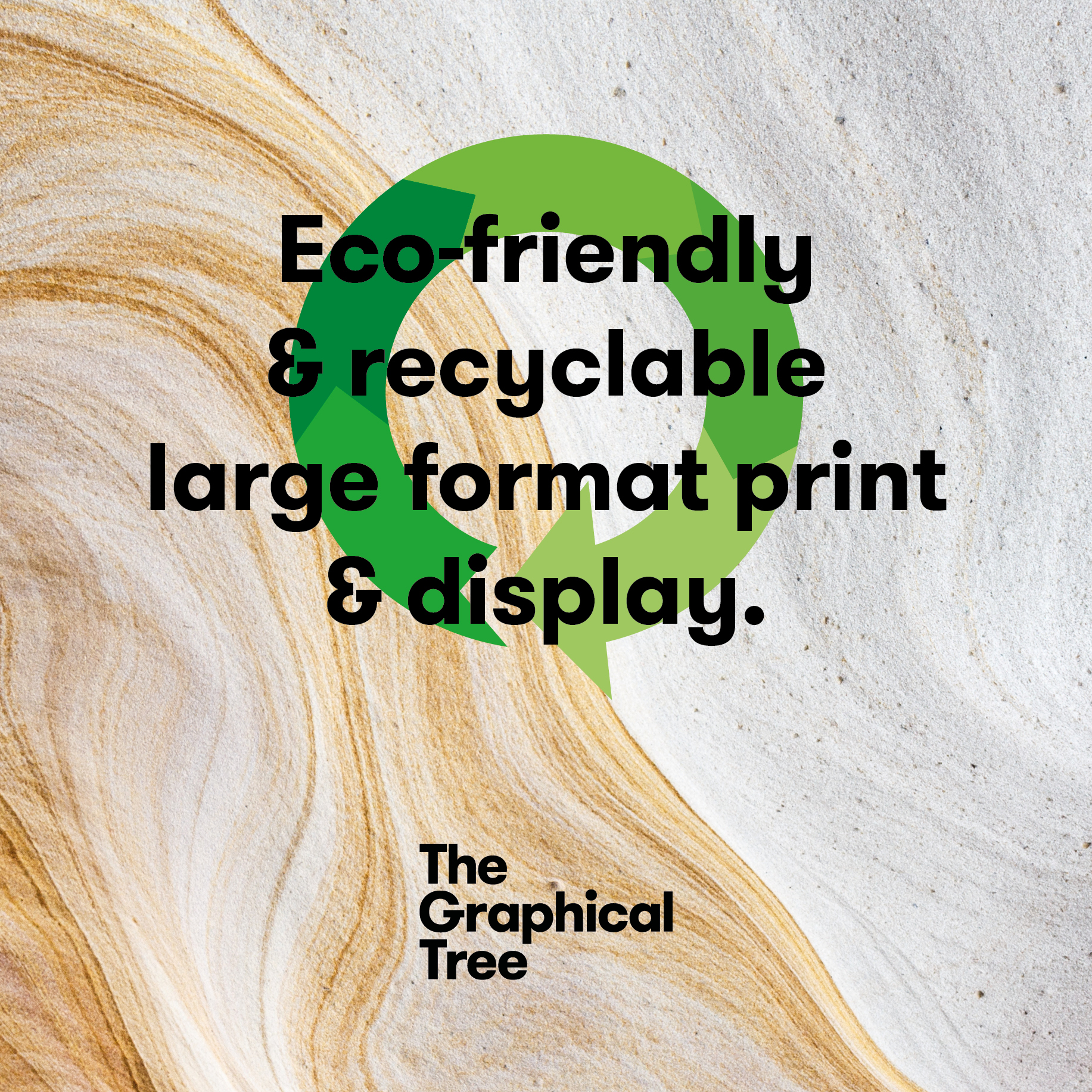One of the positive things we've noticed in the last five years is a growing interest in environmentally friendly sustainable graphics. Before the pandemic hit we would receive one enquiry a week, perhaps a fortnight for sustainable print. But now, we probably get a few a day. Emails lead with a reference to eco graphics in their subject matter. The world, it seems, has woken up to sustainable large format print and display graphics.
When we first started to research and introduce eco-materials into The Graphical Tree's portfolio the concept was hardly recognised, nor were there many materials available. We had hardly any foundation to build from. Fast fashion dictated retail, blind consumerism was rampant, and the world wasn't truly paying attention to what was at stake. Thankfully there were a few pioneers out there, including our main print partner HP, who had been developing new environmentally friendlier inkjets and latex ink, and we jumped at the chance to be involved.
So now, after a good number of years, we have a host of knowledge to share.
As to provide a helping hand for anyone wanting to do 'the right thing' and are new to environmentally-friendly display graphics, below is an overview of what you need to think about when choosing a supplier and materials. As always, we offer advice to our customers to provide the best solution and product that we can. So if you are unsure, we'll talk you through the process, sharing and advising what we feel is the right route to go, along the way. And don't be afraid to ask questions if you'd like to know more.
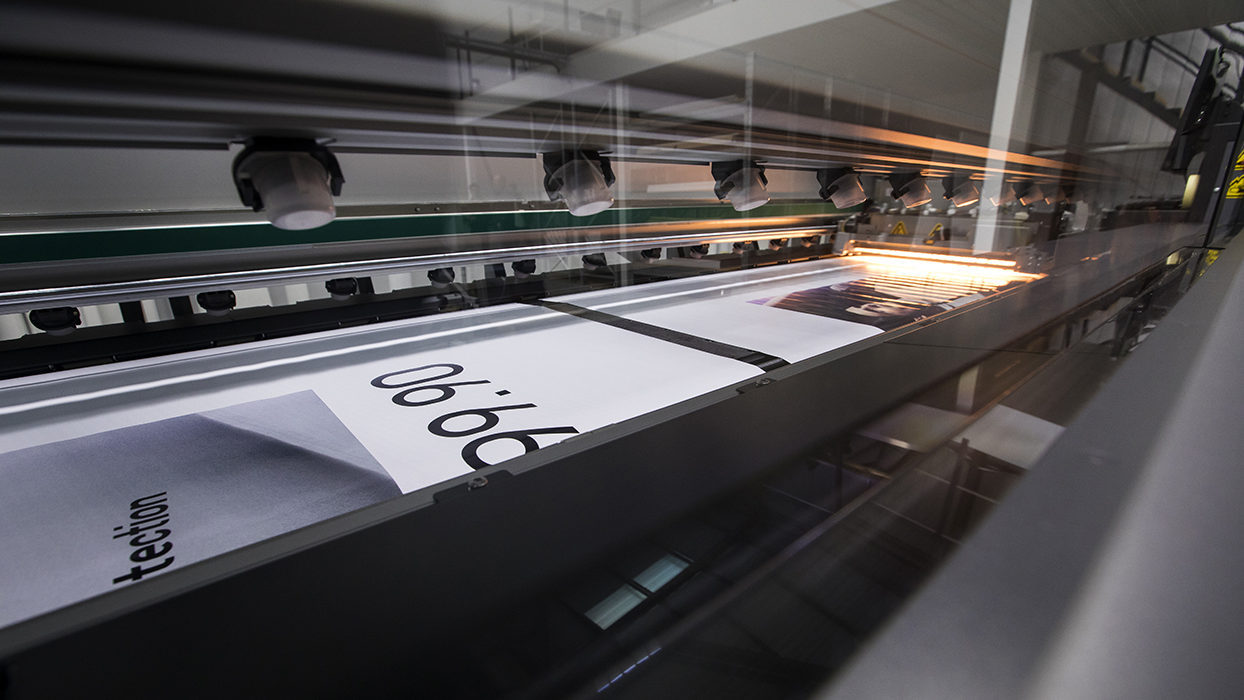
There are many inks on the market and in use for large-format inkjet printing. Latex is one of the greener options and consisting of up of 70% water, considered a better option than traditional solvent-based ink. Whereas solvent penetrates the media, latex sits on top and doesn't react in the same way, which is better for recyclability. Latex is also completely biodegradable, which happens even sooner when exposed to sunlight. Given the right conditions, latex can biodegrade at about the same rate as a leaf from a tree – around six months.
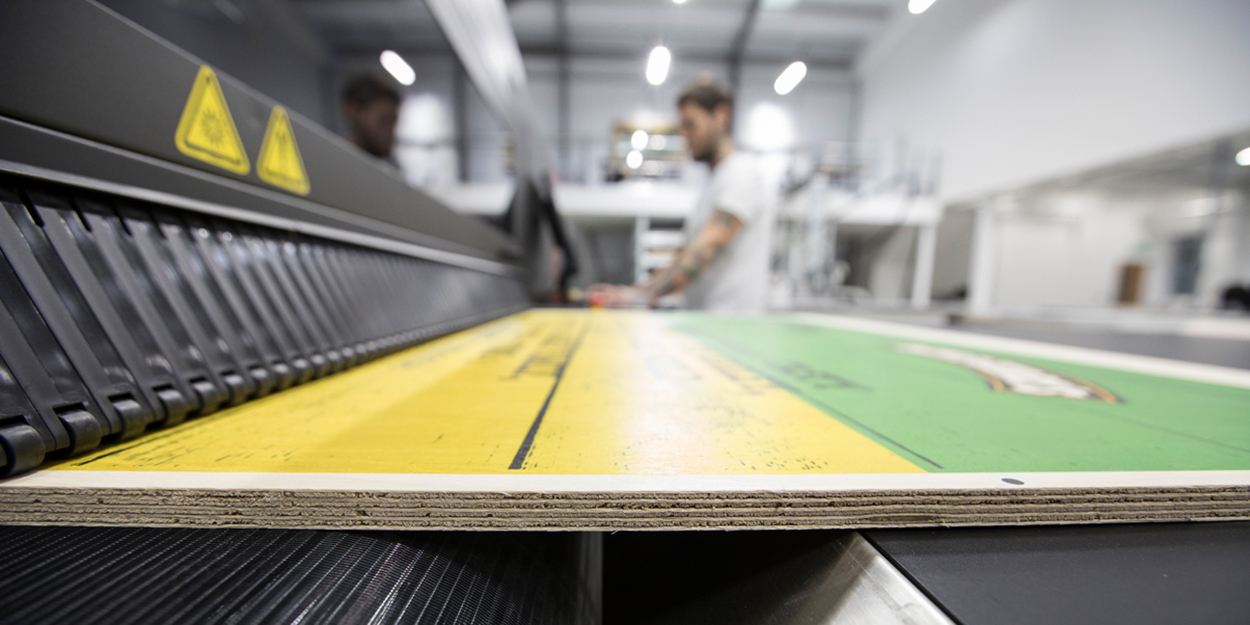
Standard solvent printing can be pretty bad for the environment, as they use harmful inks. Our direct-to-media printers tick as many boxes as we can for eco-printing. The ink used in our flatbed printers has been given the environmentally friendly Gold Award from Greenguard. It has a less harmful chemical makeup than many other printers in circulation and includes up to 50% naturally derived monomers and oligomers from renewable resources, such as plants or biomass. The inks also contain virtually no VOC's, heavy metals, SVHC's or greenhouse gases. We also use a LED lamp system for ink drying, instead of the standard mercury-based cooling. This means we are using up to 82% less energy consumption than other non-comparable solvent machines might. Learn more about eco-solvent printers today.
A question you may want to ask is, what materials are on offer, and what substrates are suitable for the graphics I need? A lot will depend on what you'd like to produce, the environment it will be used within, as well as how long it needs to last. Luckily, compared to a few years ago, there are a variety of environmentally-friendly materials available now to use.
We offer a host of eco roll media for a variety of needs – both for interior and exterior graphics.
These include sustainable papers, roll-up stand film, banner and window cling materials; PVC-free floor; magnetic; as well as wallpapers and biodegradable wall fabric. Boards include paper-based honeycomb and fluted boards and card; MDI, a zero formaldehyde glue version of MDF; and re-usable rigid boards such as Foamex and Di-Bond – more on these two below.
Many of these materials are manufactured in the UK and therefore have a low emission delivery rate to us.
By asking the right questions, the right material can be determined – what size are the graphics?; are they indoor or outdoors?; how long will they need to last?; do you aim to re-use them? We have two help guides that you may want to take a look at before placing an order, one about how we quote and the other regarding production & installation.
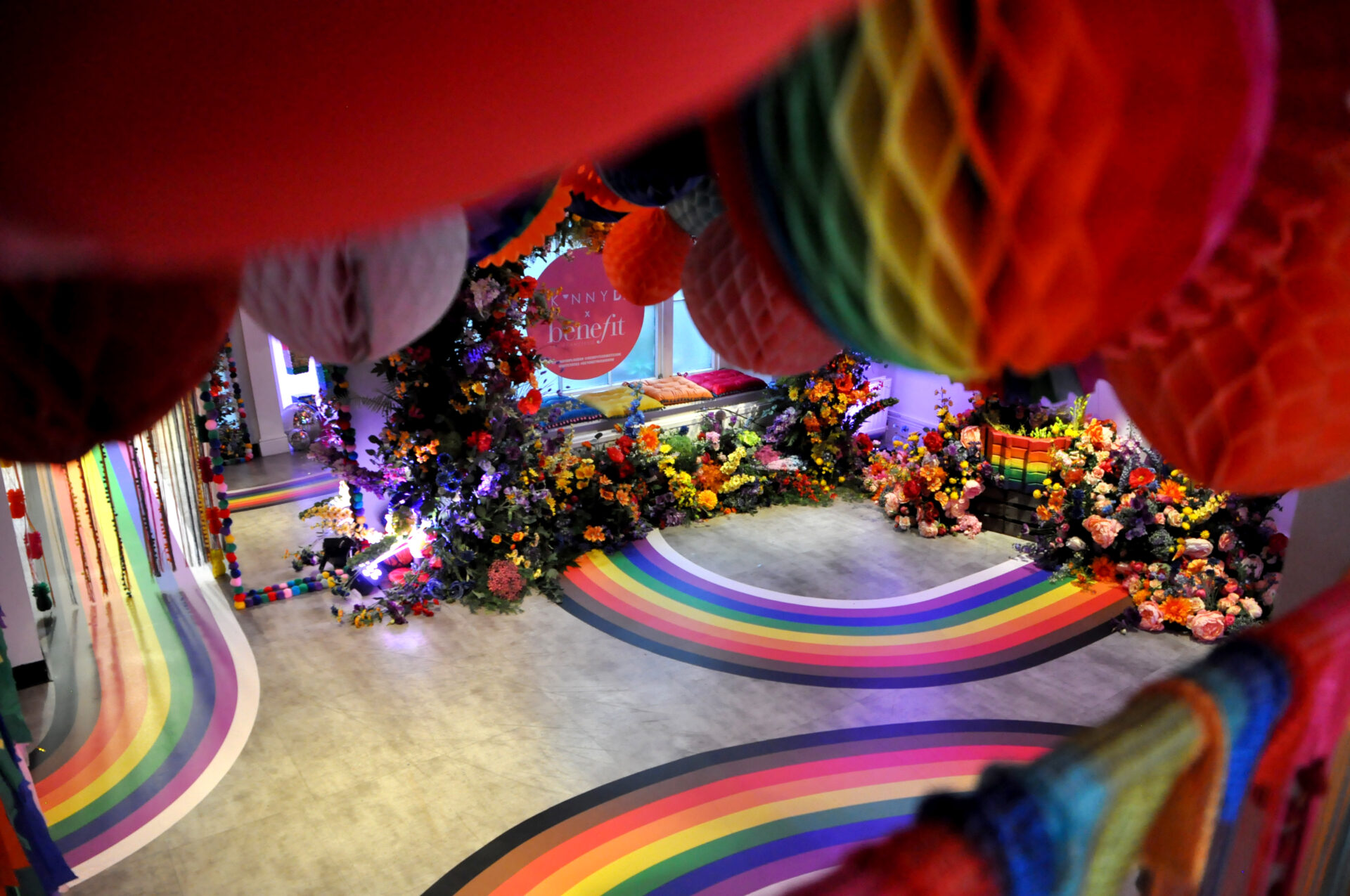
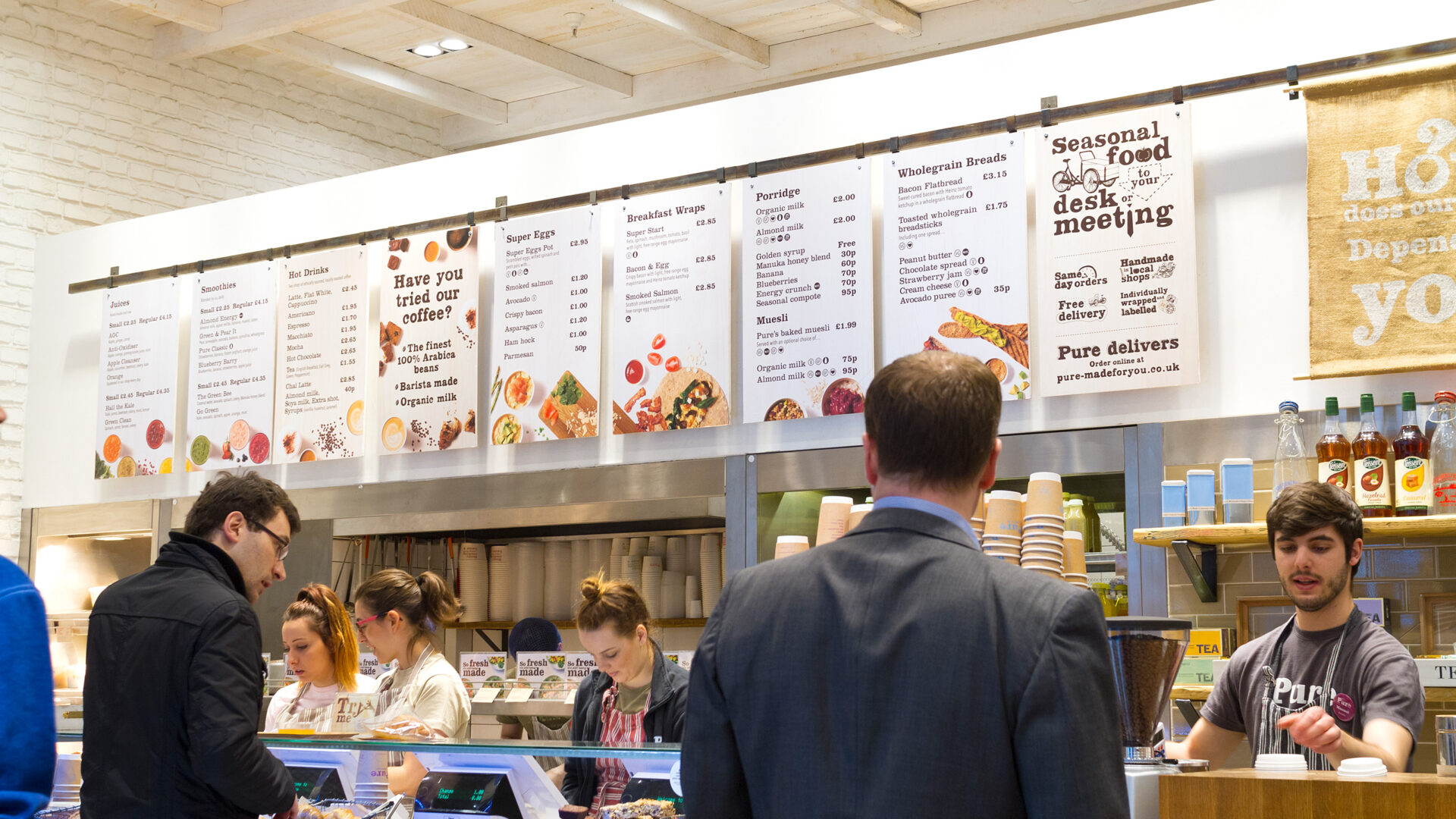 Closed-loop graphics
Closed-loop graphicsAnother important question is, can a graphic be reused, or used to print on again? Two of the boards mentioned above can be – Foamex, Di-Bond. While Foamex is a PVC-plastic material it is long-lasting and can be re-used as a board for new graphics, and to be re-used as a display product if the design is compatible for multi-use. (i.e. doesn't have fixed information like dates on it)
Di-Bond is a brushed aluminium sheet usable outside, and especially in signage such as hoardings. It could be reused and re-printed. And, thankfully, DiBond is recyclable.
Modular exhibition stands and bases are also an excellent idea when it comes to closed-loop graphics. The hardware which is often metal can be reused again and again, and graphics can be too if you're clever with the creative. Board and base graphics which consist of a stand and an interchange display graphic mean that if you use a hardwearing board for the graphic, could be reused on multiple occasions to create new displays when needed by using the same board and applying a new payer of print. For example, these board and base signs below, used for the annual Wired conferences in London, were actually used year on year just by re-skinning the surface.
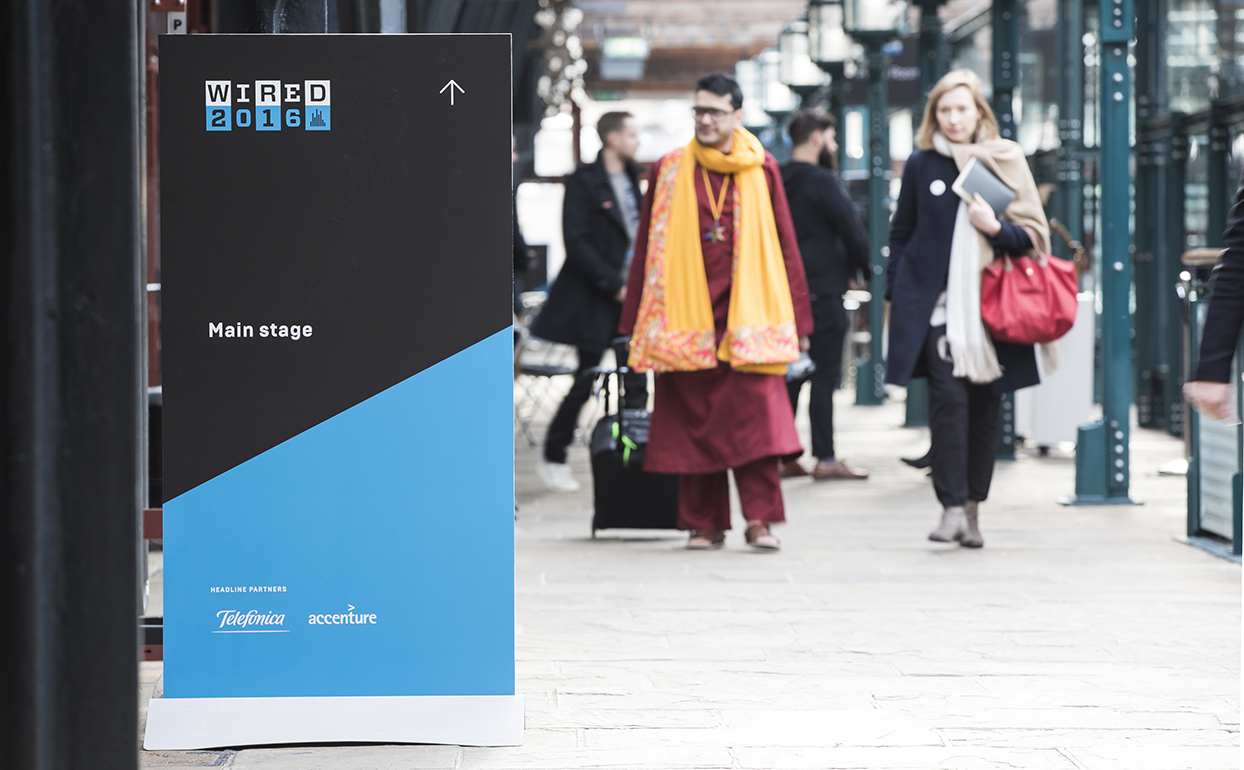
Let's not forget waste and recyclables and how they can be managed by a supplier. Here's how we do it at The Graphical Tree – In Central London, we use a waste collection supplier called First Mile, which separates and dispose of all waste in the most eco-friendly way available. This includes burning unrecyclable waste to generate clean energy and collecting food waste for composting, all instead of landfilling. Our West London site's waste is collected by Hillingdon Council, one of just 74 out of 345 local authorities in England who collect collects dry recyclables.
Ultimately when thinking about sustainable graphics you are doing so because you care about the planet and the environment. Depending on the job's brief there are a few key questions to you may consider, such as – Can you re-use a product again and again? Can it be recycled? Are the materials PVC-free? Are the graphics hazardous heavy metal/VOC/SHVC-free? (feel free to ask us any more)
We tick as many boxes as we can for you, especially when it comes to eco-friendly print inks and technology, and it'll probably be the print media used that you'll be most concerned about. Speak to us and let's see what's on offer and can do the job successfully, in an ecological and sustainable way, that way you can concentrate on your own job, while The Graphical Tree produce green graphics.
